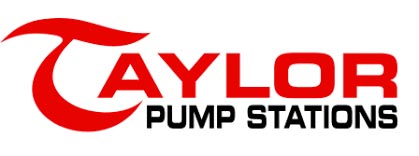“Man Your Stations” Your Waste Water Pump Station That Is.
Sound familiar?
The famous saying is related to a call to General Quarters and that all sailors drop what they’re doing and report to their battle stations. A far different scenario than those good people employed to man and run a waste water pump station but there is a link between the two environments- although granted the military call to duty is much more critical in nature let us play a bit with the words of “manning” ones station as it applies to the waste water sewer pump station.
A Waste Water Pump Station is dependent upon the men and women who oversee the daily operation of the station!
The most important aspect of any station is the condition of the equipment. The men and woman of the military are trained constantly in the importance of maintaining their equipment, whether it be a riffle or their personal safety equipment, with very good reasons as to why. Likewise the equipment in a waste water pump station is dependent upon good diligent people who understand the importance of inspection checks and the ensuing upkeep of the equipment. So we will not go into detail of how to maintain the station, but how to hire so that the station is “manned “properly. As the person responsible for hiring the sewer pump station technician insure you have a well defined scope of duties beforehand and any waste water or DEQ (Department of Environmental Quality) certifications, applicable to the position to be filled. Once the applicants certifications are met insure the distance from prospective employees home to the work station is not so far to prevent the worker from arriving quickly in case of an emergency. For it is critical that you man the waste water station as soon as possible following a high level alarm! A sanitation worker showing up a couple of hours after a sanitary sewer overflow has occurred is practically relevant to “Dereliction of Duty” and outside the limits of the requirement “the pump station technician must be able to respond in a timely manner …”.
So, you believe you have found a “few good men” (women) with the experience to handle the day to day operation of that 4 MGD Sanitary Pump Station adjacent to the the Willamette River. Here is what to look for in a waste water station operator.
- Someone you feel is not an individual employee but will embrace a team member concept and that everyone is a safety captain. Re: Safety, most pump technician can quote OSHA’S 1910 .146. The competent person duties section in regards to confined space rules & regulations. Remember a waste water wet well rates the highest in the danger modifier scale as compared to the other confined space environments.
- Look for the employee who asks about your system and its components. Who want to know brand names of equipment and can tell you why an Allen Bradley programmable controller is a good system. This potential hire has already accessed your municipal infrastructure and its components by looking up articles on the internet that maybe relevant to the waste water pump station that he or she will be supervising. So the good candidate for employment must show that they are a proactive type of person and will exhibit an erudite behavior beyond that of a regular journeyman.
- Here is a little secret on hiring good pump techs for the waste water lift station. I of course, look first for those with prior waste water pump station experience. However, if not much previous experience i will look for an automotive repair background, especially those with an ASE (Automotive Service Excellence) certification. The individual who has a background in reading the logic readouts and diagnosing electronic faults of the new cars easily adapts to the basics of SCADA (supervisory control and data acquisition) and the iPhone, as a remote control unit to access the programmable logic features the waste water pump stations programmable logic control features. They also have the engineering concepts of a pump. The “Rotodynamic” automobile water pump works on the same principal as the centrifugal pump that moves the potable water in your water lift station as well as the submersibles, in your waste water station. If you are a smaller water or sanitation district you will appreciate the mechanical background of the automotive tech in keeping all other equipment running from your service truck to your small trash pumps.
- Look for neat and properly dressed applicants. Those who look like they could walk out into the work environment and operate your waste water pump station the day of the interview.
- Dependability is of greatest importance. I would have probably listed it at #1 in importance-but realizing most HR managers-have checked on the potential hire employees references as to his or hers punctuality and job attendance at the end of the interview this “If a waste water pump station is in an alarm condition with the potential overflow looming or worse yet a sanitary sewer overflow is in effect and the time is 12:00 AM would you respond quickly and work safely when there “? If the potential employee responds without hesitation (this is important,no hesitation ) a resounding yes then I don’t have my next employee but I have just signed up a sanitation pump station technician that will be part of a team and properly man the waste water pump station.Lastly, keep your good people once you employ them, and keep reading “See you at the station”





